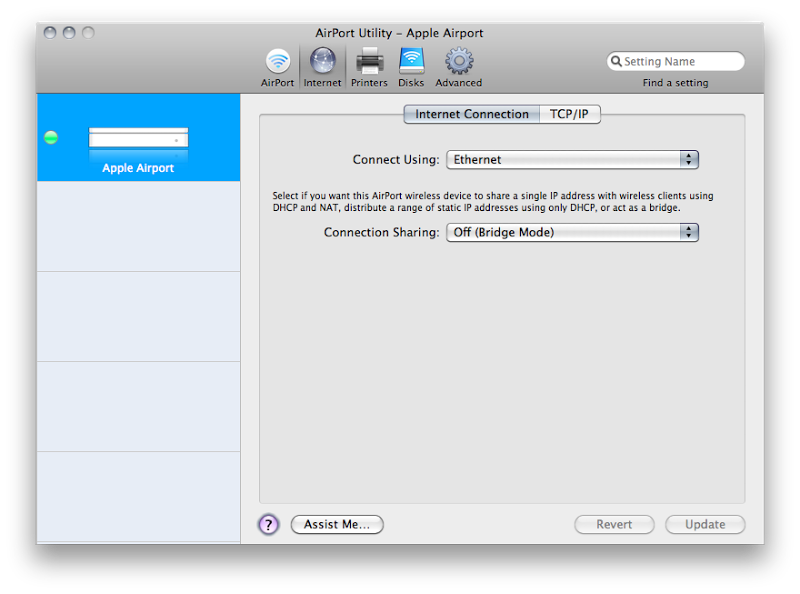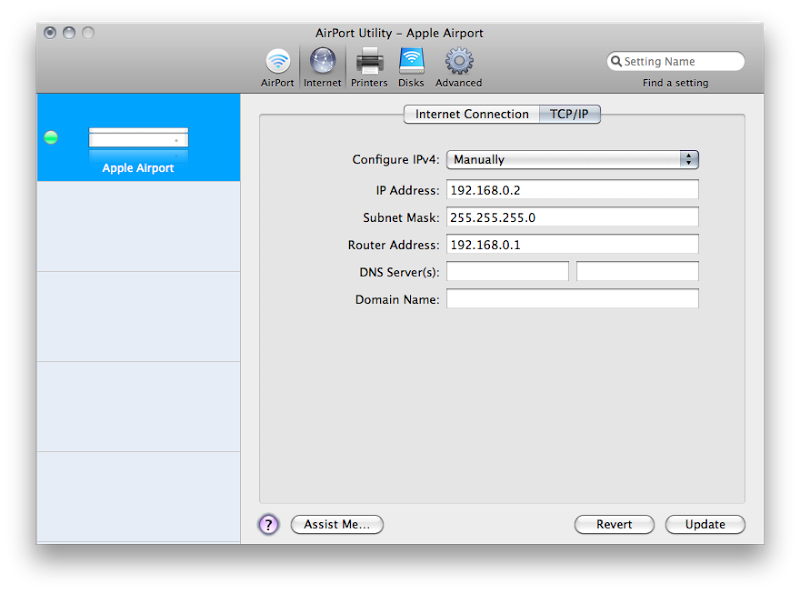I turned off my connection sharing (bridge mode).

I was wondering, since the Airport is no longer a node on the internet, why does the configuration still allow me to enter TCP/IP information, and does it make a difference what I put in there?


I was wondering, since the Airport is no longer a node on the internet, why does the configuration still allow me to enter TCP/IP information, and does it make a difference what I put in there?

Last edited:

